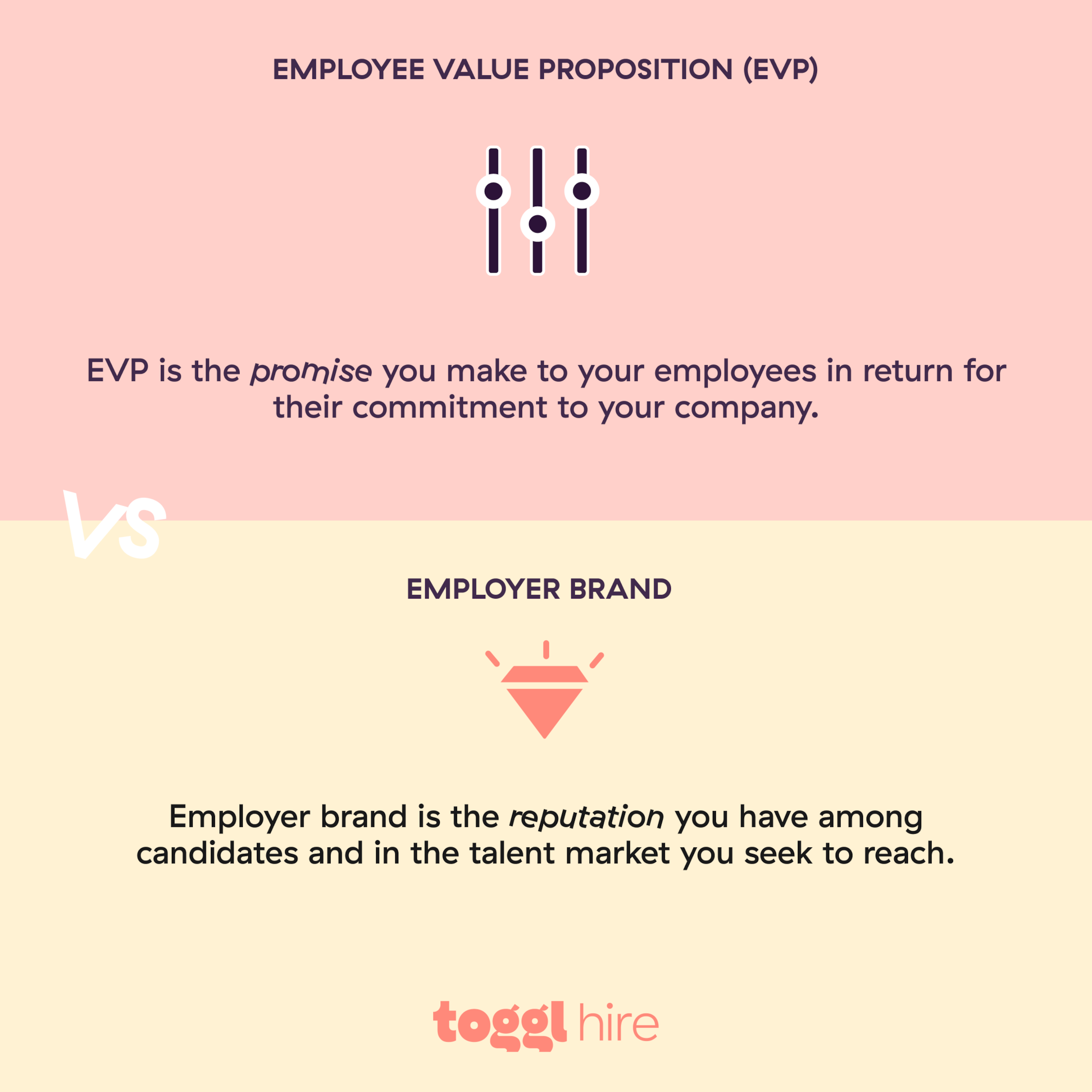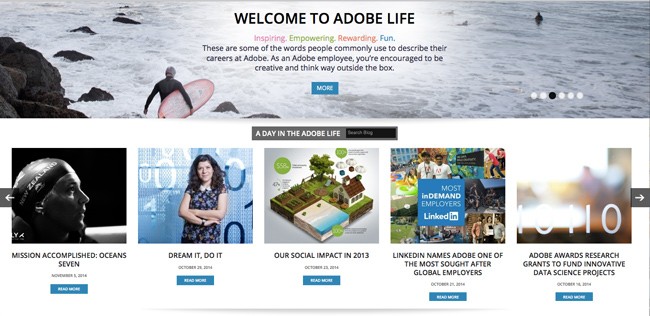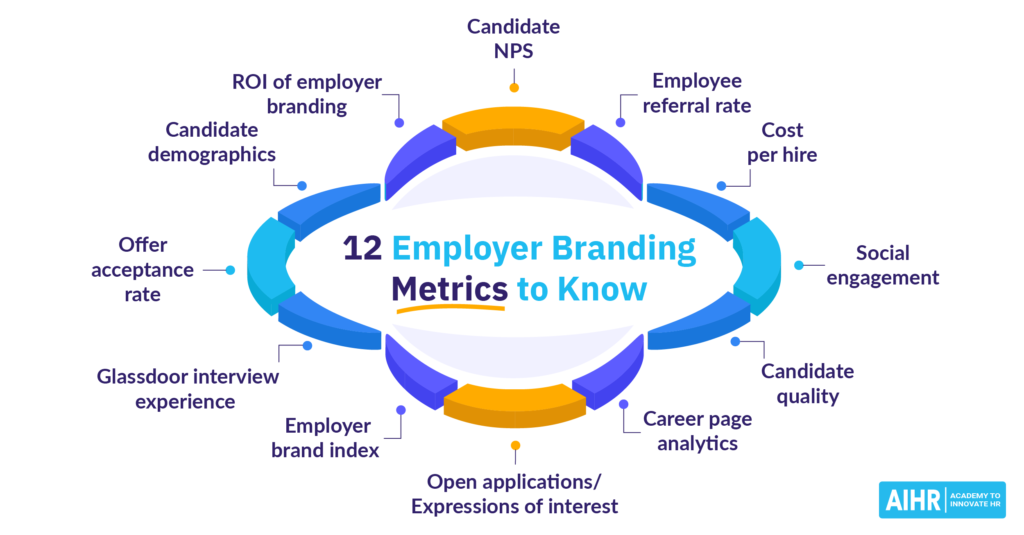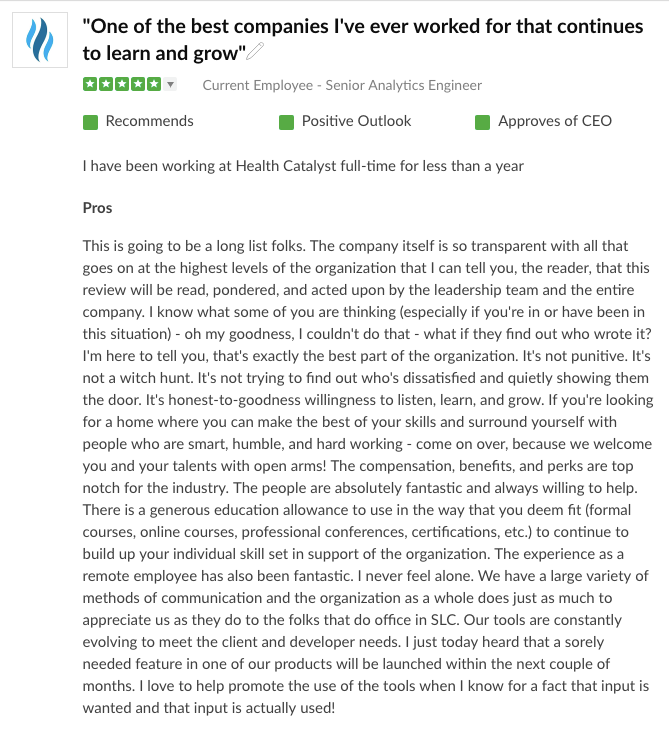Employer branding is your company’s reputation in the eyes of your employees, job seekers, and other stakeholders. If your organization cares about its employees, listens to their needs, and supports their growth, you’ve probably got a strong employer brand.
Today, employer branding is more about whether your employees are happy. Your company’s good reputation should extend to job seekers and even those exiting the organization.
And while not everyone will get it 100% right, a good employer branding strategy can boost your reputation, helping your company attract and retain top talent. (And avoid employer branding disasters like recent showdowns at Twitter and Google.)
TL;DR – Key Takeaways
- Employer branding is a company’s reputation as an employer. By focusing on 3 core components — an organization’s reputation, its employee value proposition, and the employee experience — companies can bridge the gap to becoming that (mystical) talent magnet. 🦄
- What’s the difference between an employer brand and an employee value proposition? We explore the main differences, such as one is an internal measure and the other an external measure of what people think of the company.
- Why is employer branding important? A strong employer brand can help reduce your cost to hire and time to hire, and make reaping the benefits of your recruitment efforts an easy feat.
- Metrics like Retention rate and Candidate NPS, among others, can help you measure the effectiveness of your employer branding strategies.
- Follow a simple 8-step plan to implement a winning employer branding process (see below).
- An innovative recruitment process that puts candidates first can significantly impact your employer branding. 80% of candidates who experience skills-first hiring say they prefer skills tests over resumes. Attract top talent with a modern application process – try Toggl Hire’s automated skills assessment platform.
What is employer branding?
Employer branding is a strategy that HR uses to manage a company’s perceived reputation as an employer or place of work. Your employer brand is what your employees really think of your organization. If your approach to employer branding is working well, your company is likely winning in the battle to attract and retain top talent.
What’s more, Harvard Business Review shares that employer branding includes three main components:
- Reputation
- Employer value proposition
- Employee experience
Reputation
Today’s job seekers want to be part of an organization that has a good reputation. And it’s often a big factor in applying for jobs and accepting a job offer. They’ll be asking themselves questions like, ‘Will the company help me grow in my career?’, ‘Do I feel in tune with the company’s values?’, and, ‘What impact does this business have on society?’.
Employee value proposition
Here we’re talking about what employees get in exchange for the work they do. An employee value proposition (EVP) typically includes financial compensation but also other benefits,such as opportunities for professional development, a good work/life balance, and flexible hours. (PS: It’s also referred to as an employer value proposition.)
Tip: Make sure you deliver what you promise in your EVP, or you could cause serious damage to your employer brand.
Employee experience
Basically, employee experience is how well your business carries out its EVP. You’re on the right track when employees understand what’s expected from them, can meet those expectations, and are compensated fairly for those efforts. What’s more, a positive employee experience can boost productivity which in turn boosts morale… and your employer brand. 🤩
Consistently conducting employee interviews, sometimes known as temperature checks, is a great way to benchmark employee engagement and catch any potential issues before they snowball.
Wait, is there a difference between an employer brand and employee value proposition?
Yes, there is. And it comes down to promise vs. reputation. The EVP is a promise to potential new hires of what they get in exchange for their work. It’s an internal measure. And the employer brand is how potential candidates and the talent pool perceive your organization — in other words, your reputation. So, that’s an external measure.

As we shared earlier, the EVP actually forms part of the employer brand. And can help an organization stand out among the many other choices that job seekers have.
Tip: If you aim for a human-centric EVP that focuses on employees’ needs, they’ll feel cared for and valued, which can boost their trust in your organization and their productivity levels.
The benefits of a good employer branding strategy
Even though hiring today is not easy, employer branding is one tool that helps hiring managers reach their targets. Here’s how.
- Succeeding in a complex hiring climate — your company can stand out for the right reasons amid economic crises, major tech layoffs, and general workforce exhaustion.
- Attracting quality talent — applicants value a company with a good reputation, particularly those aged 18-34. In fact, 75% of applicants are likely to turn down a job if the company has a bad reputation as an employer.
- Decreasing Cost per hire — depending on the country, industry, position, and seniority, the cost of hiring a new employee can range from $4,000 up to $20,000!
- Reducing Time to hire — while the average time to fill a role is approximately 36 days, and sometimes longer, your hiring funnel will be loaded with top talent that want to experience your company culture, cutting down your Time to hire.
- Making employee referrals easy — if current employees have a company culture they’re proud to share with talented acquaintances. Per Gartner, creating deeper connections, or a human-centered EVP, can result in a 28% increase in employees who would recommend the company. And the market’s perception of your company can be a huge unlock in attracting quality applicants.
3 examples of excellent employer branding strategy in action
Take a look at how these companies took a fresh approach to employer branding.
RingCentral
We can see why RingCentral, a B2B cloud-based communication and collaboration solution, won an Employer Branding Influencer award in 2022. Their innovation reaches beyond their software product to their candidate experience.
With a unique branding experience, they’re able to make applicants immediately feel part of the team through personalized, interactive candidate guides for the specific role they’ve applied for.
Our approach is unique by implementing employer branding at the core of our candidate and employee journey while also highlighting the voices and network of our employees to grow our employer brand and talent attraction.
RingCentral | Source
Adobe
Adobe may be a big corporate brand name, but here we’re talking about how their employer brand took the spotlight with ‘Best employer brand of 2022‘ recognition. And how they used a creative approach to elevate their own reputation as an employer.
The top brass noticed that social media efforts by one employee were creating more revenue than the company’s own social media accounts. So they decided to transform certain employees into brand ambassadors, empowering them to lead the employer brand.

Encouraging happy employees to share work-related content online (instead of forcing them to repost company news 🙈) could replace the need for any employer branding materials!
G2
Peer-to-peer review site, G2, made a decision to invest more in their talent during tough times, which paid off!
Their award-winning employer branding campaigns put their employees first during recent health and socio-economic upheavals around the globe. They helped their diverse workforce reduce feelings of overwhelm through their G2 community — the social, cultural and philanthropic side of the company.

Since their community aligned with their company values of authenticity and kindness, they “fostered a culture of love to inspire employee engagement, higher productivity, and customer satisfaction. This was how our “Inspire Love” strategy was born”.
How to measure your employer brand
You can measure the success of your employer brand by analyzing the outputs of your strategy, such as Employee referral rate, Social engagement, and Open applications metrics.

To improve your employer brand, try tracking and analyzing some of the metrics listed below.
Number of applicants
One of the simplest ways to measure an employer brand is by how many job seekers apply for a role. If your employer brand has a good rep, you should see the Number of Applicants metric steadily increasing.
Candidate quality
This metric is one that’s a bit tricky to measure directly. However, you can get a good idea through metrics like:
- Number of referral candidates
- Ratio of applicants to those interviewed
- Ratio of interviews to offers
- New hire retention rates

Retention rate
If your employees are happy at your organization, they’ll stick around longer.
The longer the duration, the better your employee retention rates.
Hiring costs
One of the essential recruiting metrics, Cost per hire, is the total cost spent in making each new hire. The better the employer brand, the less money the team needs to spend on recruitment marketing costs and attracting new, quality hires.
Employee brand index
Conducting an employer brand index can give you insight into what your existing employees think of your organization. You could also achieve similar results by conducting an anonymous employee survey.
Candidate NPS
The candidate net promoter score (NPS) is a measure of how candidates find the recruitment experience. While improving your employer branding is playing the long game, you can take steps now to improve the candidate experience through better recruitment practices.
Out in the wild, 60% of applicants have had a poor candidate experience. Yet, using our skills assessment platform, 80% of our candidates loved the Toggl Hire experience!
Social media listening
What are your customers and fans saying about your company on social media?
Since potential job seekers are quick to pick up on any negative comments, you can employ a social media manager or use social listening software to monitor any mentions and interactions about your company on social media channels.
Pst! Read this if you need guidance on how to hire a great social media manager!
Company review sites
While anyone can leave a comment on social media, company reviews on sites like Glassdoor or Indeed carry more weight. Encourage employees to share their experiences of working at your company to add authenticity to your employer branding efforts!
Tip: Check your profile and any comments about your company on these sites so you can use the info to improve the candidate and current employees’ experience.

8 steps to build a powerful employer brand
Now, let’s go through the steps HR teams can follow to get the max from their employer branding efforts.
1. Conduct an employer brand audit
Do all your communications, from your career site to job ads and your social media, align with your employer brand?
Perform an employer brand audit regularly to ensure consistency across all your channels. Consider conducting an anonymous employee survey, for instance, to learn what your current employees like and dislike about the workplace, rather than make assumptions.
2. Craft your own employer branding narrative
Decide what you want your employer brand story to be, and ensure the organization lives it through your company’s culture. You can share your employer brand or company story through videos, webinars, hackathons, photos, testimonials, and other recruitment marketing.
Tip: rope in the marketing team so, together, you can expand your brand’s reach.

3. Align your EVP to your brand narrative
After creating your employer branding narrative, make sure you align your employee value proposition, including job ads and career page info, with that narrative.
That way, current and potential employees will benefit from the positive company culture that you’re continually curating.
4. Be authentic
Ensure your company culture and work environment actually match your EVP and don’t try to hide challenges from future employees.
Steer clear of content without substance, promises you can’t keep, and values that are identical to those of some other tens of companies out there. Focus on the challenges, and find ways to flip them into an actionable employer branding strategy that emphasizes your uniqueness.
Employerbranding.tech | Source
5. Follow an employee-first approach
By understanding how your employees feel and what they need, you can put them first.
With this approach, you’ll probably find it easier to create a strong company culture of trust and transparency and put it into practice.
6. Use the latest technology
Hook the right kind of job candidates, like young software developers, by ensuring your company uses the latest software to carry out its work.
For instance, if your ideal candidates are AI enthusiasts, incorporate AI-driven software into your tech stack to gain a competitive edge.
7. Create thought leadership assets
If your company has a lot of knowledge about a specific topic, you can use that to create thought leadership assets, like eBooks and whitepapers, that you can share as a helpful resource.
For instance, HubSpot (software used for marketing, sales, and customer service) is constantly sharing resources to help digital marketing teams, such as blogs, videos, podcasts, and templates.
[Employer branding] is doing marketing to market a different kind of product, which is your culture. That doesn’t mean you need tons of budget or resources to introduce these crazy perks or free food or any of that. That’s not really what culture is. Culture is what you believe. It’s what your values are. And it’s kind of the system of values that keeps everybody on the same page and aligned to follow your mission.
Hannah Fleishman, Senior Manager of Employer Brand at HubSpot
8. Focus on onboarding
The best way to turn new employees into brand champions is with a successful onboarding process.
Today, onboarding is about more than learning what the company does and who your colleagues are. You should include info about your company culture and values too. Plus, to really hit home, you can make it role-specific where possible to personalize the experience and make them feel welcome in your work environment.
On the hunt for more onboarding tips to boost your employer brand? Check out this video:
Create a positive experience for top candidates with Toggl Hire
To create a good employer brand, hiring managers and the talent acquisition team need to think about what story they want the employer brand to portray and share it consistently with current employees and potential candidates.
By being authentic and putting employees first, organizations can ensure that the combination of their reputation, employee value proposition, and employee experience helps to attract and retain quality employees.
One core component that can make or break employer branding strategies is the candidate experience. Here’s what Proxify had to say about introducing skills tests into their screening process:
“We have decided internally to have a quick Tech Quiz for fast-tracking of relevant candidates. It was meant to early identify the 5-star candidates to give them a superior hiring process experience.”
Alexis Komarov, Head of Talent Acquisition at Proxify
With Toggl Hire’s skills assessment platform, you can deliver a positive experience that matters! And an innovative recruitment process can greatly boost any company’s reputation.
Juste loves investigating through writing. A copywriter by trade, she spent the last ten years in startups, telling stories and building marketing teams. She works at Toggl Hire and writes about how businesses can recruit really great people.





